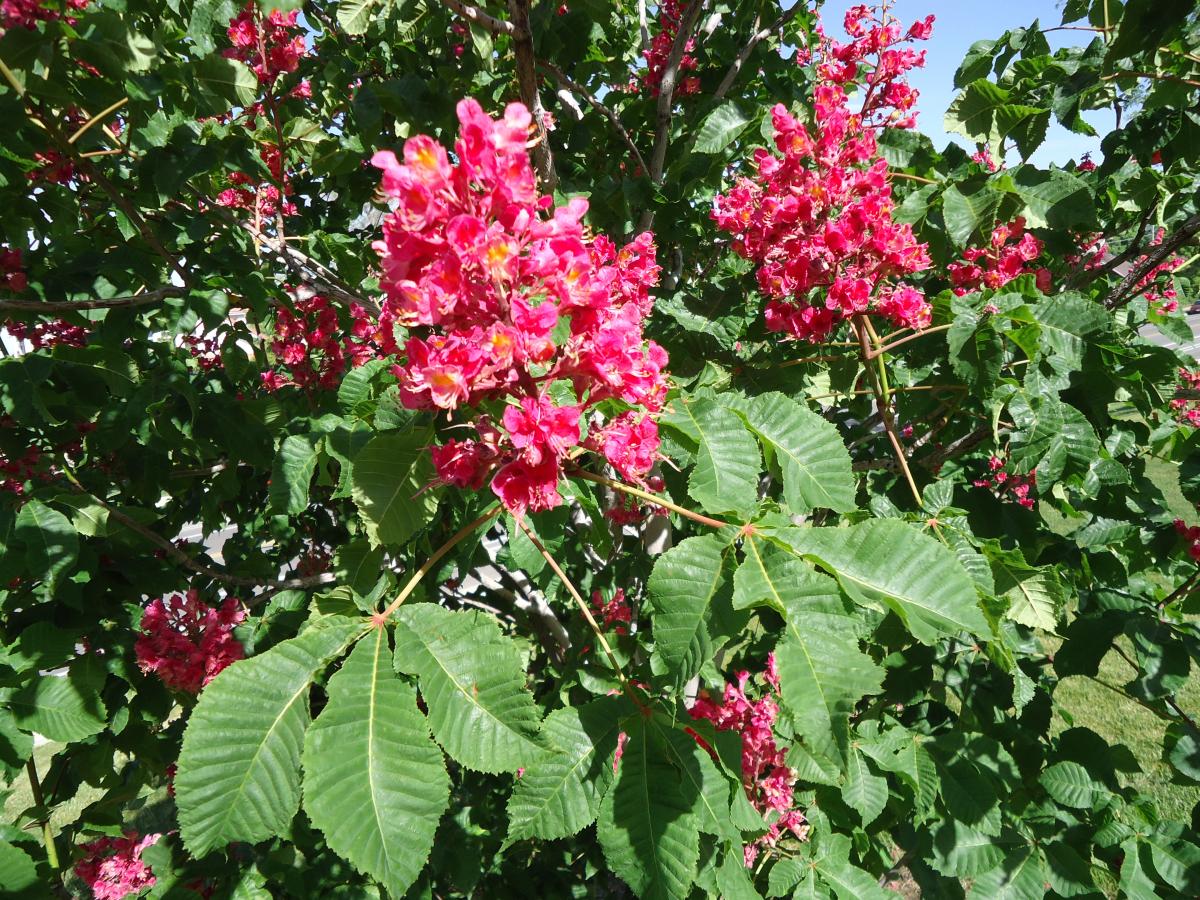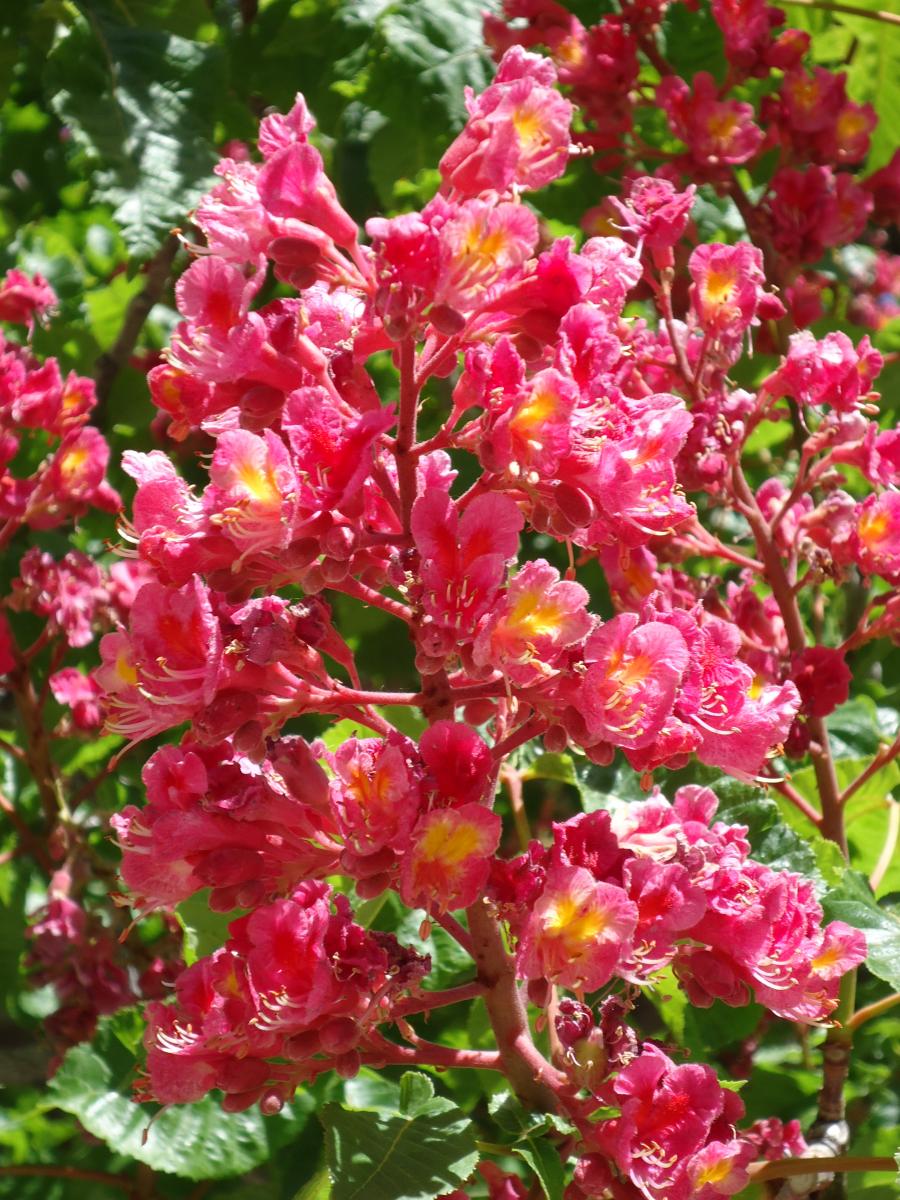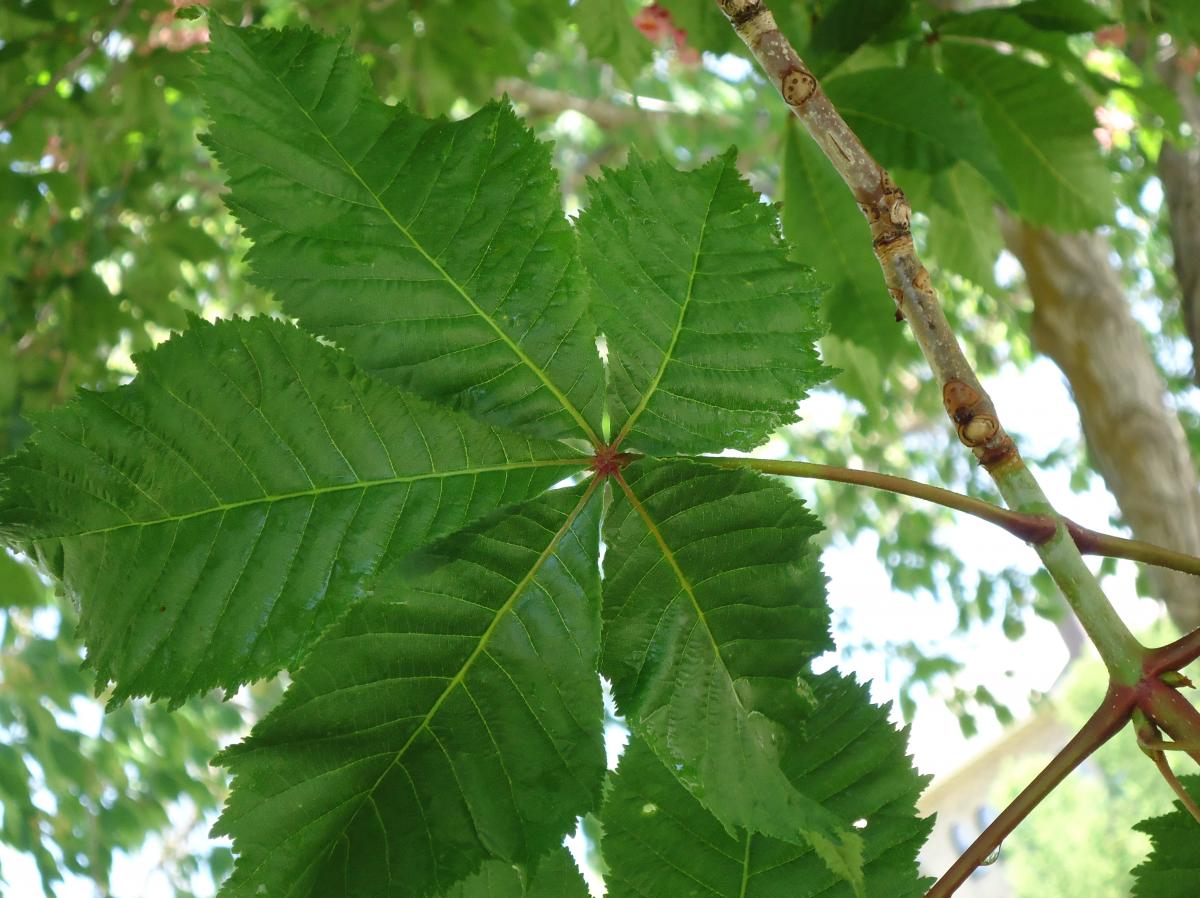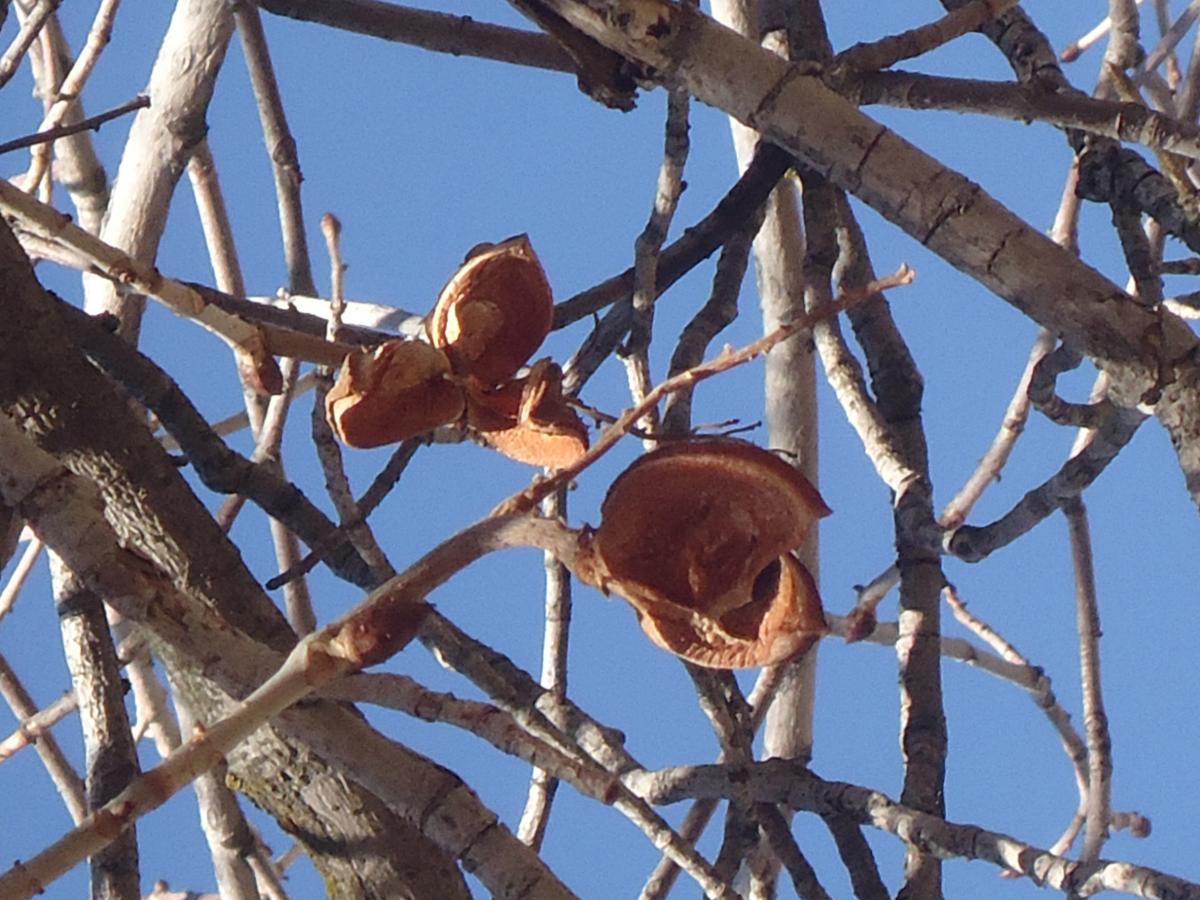Red Horsechestnut









Aesculus x carnea
Leaves: Deciduous. Leaves are divided in 5 leaflets, sometimes 7, spreading out like the shape of a hand from one petiole (leaf stem). Leaf edges have serrations on serrations and have an undulating or wavy edge. Leaflets are widest towards their points and 3 to 6 inches long. Dark green and lustrous color. Fall color is insignificant, sometimes yellow-brownish.
Bark/Twigs: Bark is dark gray and smooth when young. Gray-brown and very scaly with long plates when older.
Flowers/Fruit: Very showy red to dark pink flowers grow in 6 to 8 inches tall and 3 to 4 inches wide panicles. Flowers sometimes have a little yellow inside. Blooms in late spring (May). Large, 1½ inch diameter, brown, shiny, inedible nuts grow in fruit capsules with a somewhat prickly husk.
Mature size and shape: Medium large. 30 to 40 feet high by approximately the same width. May stay smaller in Utah. Rounded shape.
General information/special features: Plant in full sun to partial shade. Moist soil is preferred. Dislikes overly dry soil.
Landscape use and maintenance: Beautiful ornamental shade tree. Fits well in residential yards. Average growing rate. Average to high maintenance with flowers.
USDA Hardiness Zone: 5 to 8
Family/Origin: Hippocastanaceae – Buckeye. A cross between A. hippocastanum and A. pavia, probably from Germany.
Campus Use: Somewhat common. Can be found in President's Circle and north of HPER North (Bld 92). The tree on the south of President's Circle is on the Utah Big Tree Registry.
